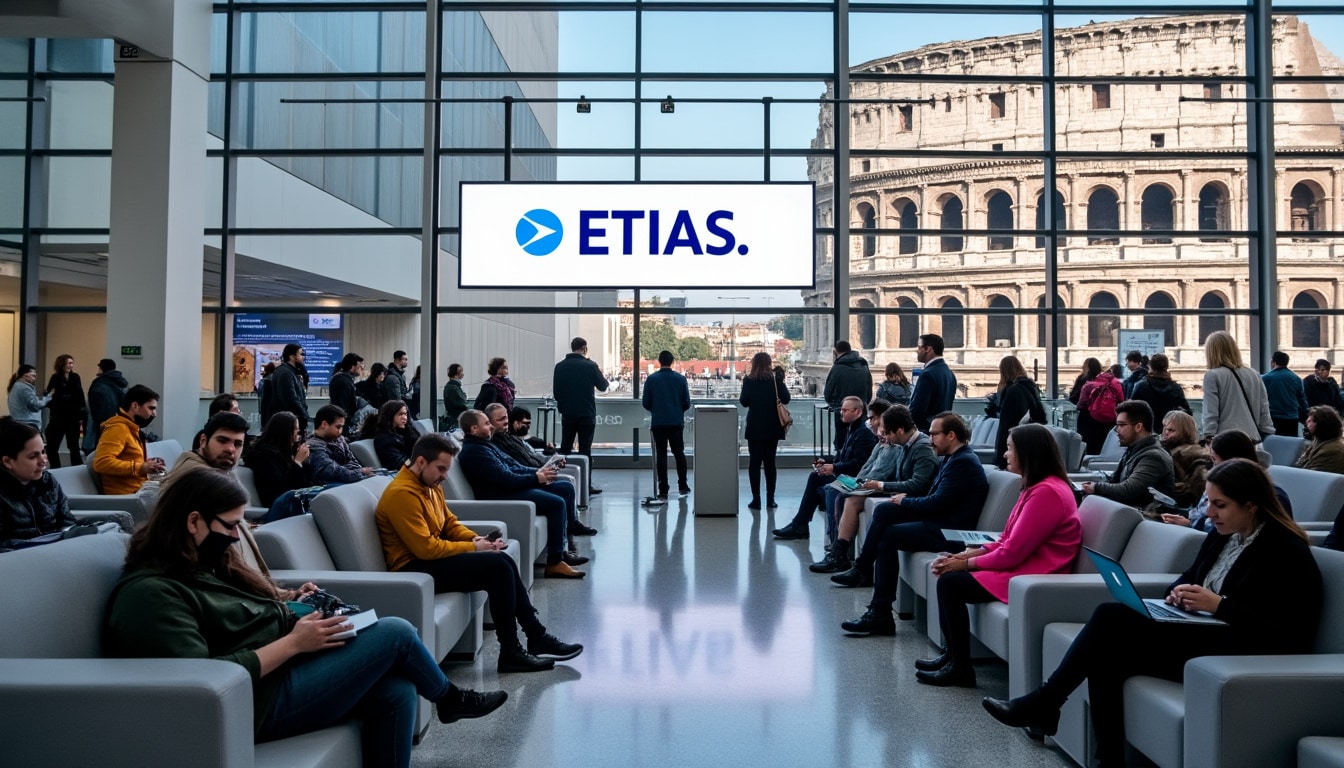For travelers planning a captivating journey to Rome, understanding the visa requirements is essential for a seamless experience. While Rome’s ancient allure is undeniable, navigating the path to entry requires careful attention to visa regulations. From the intricacies of short-stay Schengen visas to necessary documentation for diverse purposes of travel, getting it right can mean the difference between a hassle-free trip and unexpected delays. Here’s a comprehensive guide on everything you must know about entering Rome, ensuring your trip to the Eternal City is as smooth as its enchanting cobblestone streets.
The Italy Schengen Short-Stay Visa: Essential Information
Among the most vital details for travelers to grasp is the Italy Schengen Short-Stay Visa, commonly referred to as the Type C visa. This visa permits entry not only into Italy but across all Schengen countries for up to 90 days within any 180-day period. So, if you’re planning a tour starting in Rome but extending to other European gems, this visa is your gateway.
For non-EU citizens, meeting the strict requirements is non-negotiable. The core documents include a completed visa application form, a valid passport, and two identical passport-sized photos. These pictures must adhere to specific dimensions and clarity, reflecting recent resemblance to the applicant. Additionally, proving the purpose of your visit is a fundamental aspect. Whether for business, tourism, or other activities, the cover letter should explicitly state your intentions alongside proof of accommodations, like hotel bookings.
The preparation doesn’t stop at documentation. Timing is critical, as applications must be submitted and processed before your travel date, typically taking up to 15 days but sometimes longer during peak seasons. It’s recommended to begin your application process early to mitigate any unforeseen delays. Also, being informed about the visa fees, which vary depending on the applicant’s nationality, can save you from last-minute surprises.
Minors traveling to Italy are subject to additional scrutiny. Required documents include certified parental consent and identification copies, ensuring their safety and compliance with Schengen regulations.
Lastly, a quick tip: Keep track of your travel days. Overstaying is a grave indiscretion with serious repercussions, including fines and entry bans. Use online calculators or travel planning services such as VisaHQ or TravelVisaPro to monitor your stay within the Schengen Area effectively.
ETIAS: The New Entry Requirement for 2025
The European Travel Information and Authorisation System (ETIAS) is set to transform the entry landscape into Italy starting in 2025. This electronic system mandates that travelers from visa-exempt countries, including the United States, Canada, and Australia, obtain prior authorization for stays under 90 days. Essentially, ETIAS serves as a pre-travel screening, ensuring security while maintaining the ease of travel within the Schengen Zone.
Applying for ETIAS is straightforward, requiring only an online application through platforms like VisaHQ and iVisa. The application entails filling out personal details, travel information, and a brief health and security questionnaire. It’s paramount to ensure the accuracy of the submitted information to avoid application rejections.

What to Expect During the ETIAS Process
Once submitted, the ETIAS system reviews applications against a series of databases to validate the applicant’s security status. In most cases, approval is swift, typically within minutes, although it can take up to 96 hours. A small fee is associated with the ETIAS application, payable online, making it accessible to a broad spectrum of travelers.
Approved ETIAS authorizations are valid for three years or until the traveler’s passport expires, whichever comes first. This flexibility allows repeat visits to the Schengen area without repeat applications, simplifying travel logistics. Check platforms like TravelState.gov for updates and detailed guidance.
However, possessing an ETIAS approval does not guarantee entry. Travelers must convince border officials of their travel purpose and intent to return to their origin country post-visit. This underscores the importance of carrying all relevant documents, such as return tickets and proof of accommodations, during your journey.
Special Visa Categories: Tailoring Your Visit to Rome
Understanding the diverse visa categories can profoundly influence your travel plans. While the Schengen visa covers most short tourist visits, business travelers, students, and others with specific goals might require tailored visas.
For those embarking on a business journey, an Italy Business Visa provides the necessary permissions. Applicants must submit invitations from Italian partners, proof of ongoing business exchanges, and documents validating their travel intentions.
Students eyeing Rome’s top universities or short-term courses must opt for a Student Visa, necessitating proof of enrollment and financial subsistence throughout their stay. Moreover, educational institutions provide specific documentation to aid the visa process.
The Italy Cultural Event Visa, perfect for enthusiasts in arts, sports, or filmmaking, requires evidence of participation, event tickets, and past accolades. Such cultural exchanges bolster Italy’s rich artistic legacy.
Finally, should you find yourself in need of medical care in Italy’s renowned hospitals, a medical treatment visa ensures you access specialized treatments. This visa involves a comprehensive submission, including medical history, diagnoses, and care plans from both home and Italian medical professionals.
Explore platforms like SchengenVisaInfo.com and VisaJourney.com for in-depth visa information tailored to your specific needs.
Preparing Your Documents: A Checklist for Rome
Document preparation is at the core of a successful visa application. An oversight as minor as an expired passport can derail your travel plans. Here’s a comprehensive checklist to simplify the process:
- 🗂 Italian visa application form: Fully completed and signed.
- 🛂 Valid passport: Ensure at least six months’ validity beyond your departure date from the Schengen area.
- 📷 Passport-sized photos: Follow precise Schengen guidelines for size and clarity.
- 📄 Civil status documents: Marriage or birth certificates as applicable.
- ✈️ Proof of travel: Confirm flight itineraries or reservations.
- 🏨 Proof of accommodation: Hotel bookings or invites from hosts.
- 💰 Proof of financial means: Recent bank statements, savings, or sponsorship documentation.
- 📜 Cover letter: Detail your travel intentions and assurance of return.
This meticulous preparation not only bolsters your visa’s approval chance but also guarantees a smoother Roman adventure. For further cost considerations and budgeting tips when traveling to Rome, explore these helpful resources.
FAQs on Visa Applications for Rome
Let’s address some common queries helping clarify visa requirements:
Do US citizens need a visa for short-term travel to Rome?
No, US citizens can enter Italy without a visa for tourist or business visits under 90 days. However, ensure your passport is valid for at least 6 months beyond your stay.
How long does it typically take to process an Italy visa?
Visa processing generally takes up to 15 working days. It’s best to apply well in advance, keeping in mind unseen delays during peak travel seasons.
What is the cost of an Italy Schengen Visa?
Visa fees can vary, but for most adults, the cost is approximately €80. Children and certain other applicants may qualify for reduced fees.
With these insights into navigating the visa requirements for Rome, you’re well on your way to exploring the heart of Italy’s historical and cultural magnificence. Embrace the adventure, ensuring every aspect of your travel documentation is thoroughly and correctly prepared, paving a Mediterranean journey as grand as Rome itself.

